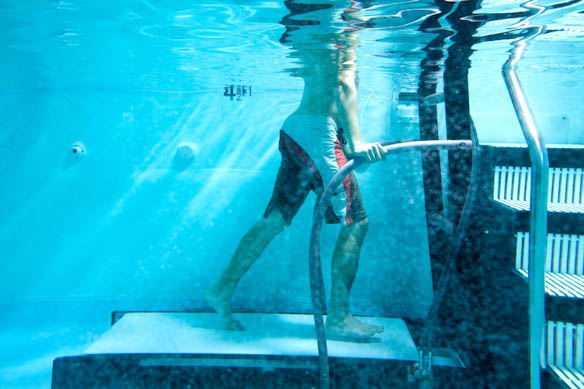 The human body is often asked to do things that it was not initially intended to do. We add bulky muscles to our frame to produce more power, we exercise endlessly to help us run for longer periods of time, and work on explosive movements to improve our instant reaction and muscle memory. However, the body is often asked to do too much and it reaches a breaking point. When athletes, recreational or professional, push their body too far and suffer an injury that inhibits range of motion and ability to move freely they need the help of an orthopaedic sports medicine specialist.
The human body is often asked to do things that it was not initially intended to do. We add bulky muscles to our frame to produce more power, we exercise endlessly to help us run for longer periods of time, and work on explosive movements to improve our instant reaction and muscle memory. However, the body is often asked to do too much and it reaches a breaking point. When athletes, recreational or professional, push their body too far and suffer an injury that inhibits range of motion and ability to move freely they need the help of an orthopaedic sports medicine specialist.
Orthopaedic medicine is concerned with the study, diagnosis, and treatment of ailments that affect the musculoskeletal system. As the term might imply, the musculoskeletal system is the muscle and skeleton system within the body responsible for every movement an individual makes. The major features of the musculoskeletal system include the following:
- Muscles
- Bones
- Tendons
- Ligaments
- Other connective tissues
The field of orthopaedic sports medicine is devoted to the prevention, recognition, management, and rehabilitation of injuries incurred through vigorous activity in sports or other recreational activities. Sports medicine is not just about the treatment of injuries after they occur; instead the focus is on a total program to help avoid common injuries that occur from overuse, lack of knowledge, and injury. Sports medicine isn’t just the responsibility of doctors though; it is the responsibility of everyone involved from players and coaches to parents and referees.
A crucial component of orthopaedic sports medicine is prevention. It is important for athletes to keep their bodies in good condition to compete in sporting events, and it is also their responsibility to understand their body and know its limits. Sports medicine extends beyond the individual though, coaches need to know their players’ limits as well and understand the proper rules of the game. Players need to play within the rules of the game to prevent injuries to themselves or others and it is important for referees to properly enforce the rules as well to keep sports as free of injury as possible.
Nothing in life is perfect however and sometimes all the prevention tactics in the world won’t be enough to help avoid an injury. This is where orthopaedic sports medicine begins to focus on the practitioner. It is the responsibility of various physicians within sports medicine to recognize and properly treat various injuries. Orthopaedic sports medicine isn’t all about surgeons repairing injuries. Team physicians and athletic trainers are often the first line of offense against an injury in the field of orthopaedic sports medicine. These individuals will be the first to lay hands on an injured individual and are responsible for properly assessing the initial injury to determine the severity.
Sometimes injuries are severe enough that they require surgery to repair damaged ligaments, ruptured tendons, and torn muscles. Some of the most common injuries in sports that involve orthopaedic sports medicine include:
- Torn Anterior Cruciate Ligament
- Ankle Sprains
- Shin Splints
- Broken limbs
The nature of each injury may require different treatments with different recovery times. Physicians with a background in orthopaedic sports medicine have a unique understanding of the body as it pertains to physical activity and work to repair injuries through surgery with the goal of helping athletes, recreational and professional, to return to the field of play and enjoy a healthy, active lifestyle again.